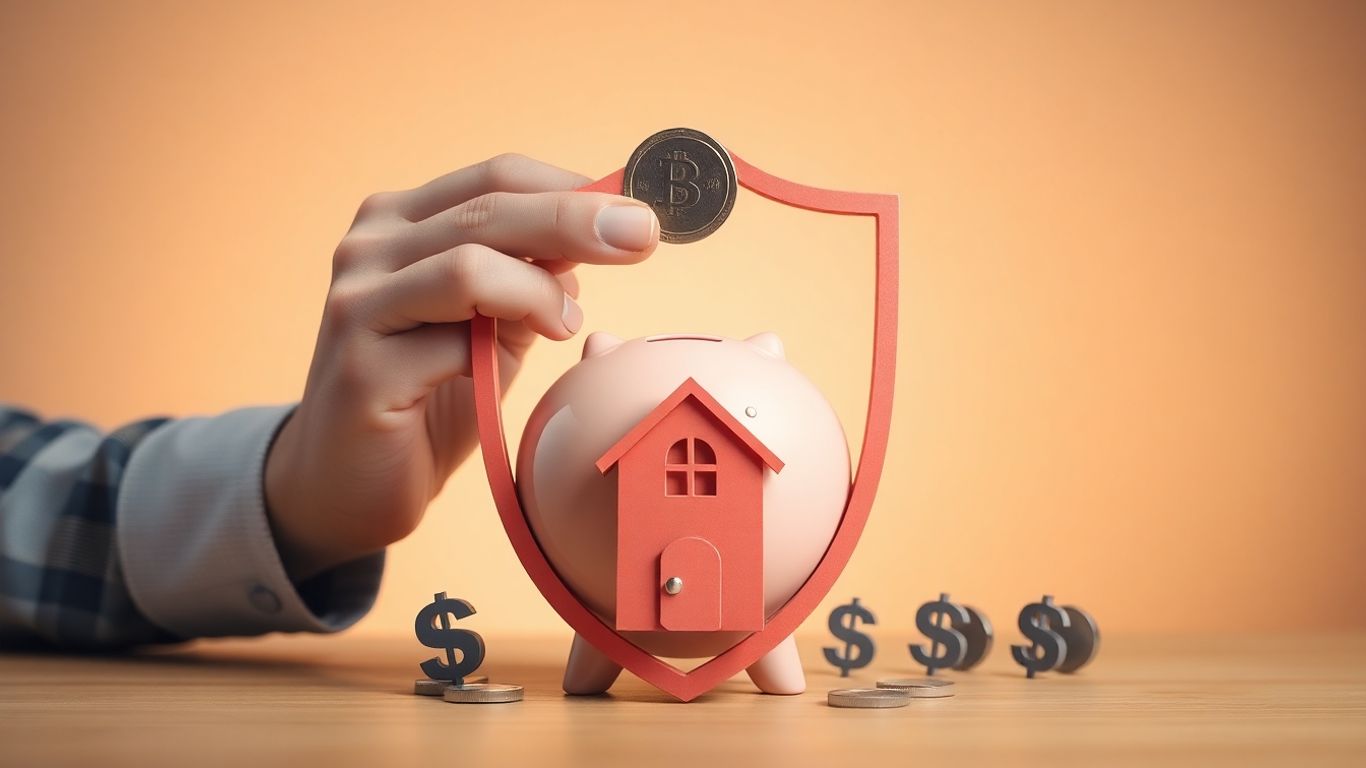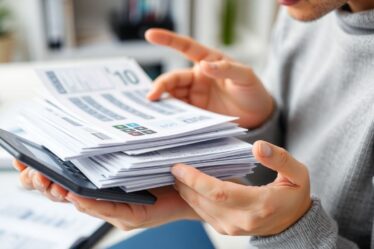
Life throws curveballs, right? One minute everything’s fine, the next you’re dealing with a surprise car repair or a sudden job loss. It’s easy to get stressed when unexpected bills pop up. But what if there was a way to handle these hiccups without digging yourself into a financial hole? That’s where an emergency fund comes in. Think of it as your personal financial safety net, ready to catch you when you stumble.
Key Takeaways
- An emergency fund is a stash of cash set aside for unexpected expenses, like medical bills or car troubles, helping you avoid going into debt.
- Having savings for emergencies provides peace of mind and stops you from relying on credit cards or loans when life gets tough.
- Unexpected events like job loss, medical issues, or home repairs can be managed more smoothly with an emergency fund, preventing major financial stress.
- Building your fund involves setting a savings goal, automating contributions, and using unexpected money like tax refunds to speed things up.
- Remember to replenish your fund after using it and keep an eye on your progress to make sure it’s ready for the next unexpected event.
Building A Financial Safety Net
Life throws curveballs, right? One minute things are humming along, and the next, your car decides it’s time for a very expensive nap, or maybe you get that unexpected call about a family member needing help. These aren’t rare occurrences; they’re just part of life. That’s where building a financial safety net, specifically an emergency fund, comes into play. It’s not about being pessimistic; it’s about being prepared.
Understanding The Purpose Of Emergency Savings
Think of an emergency fund as your personal financial shock absorber. Its main job is to catch you when you stumble, preventing a small hiccup from turning into a full-blown financial crisis. Without this cushion, unexpected costs like a sudden job loss, a medical issue, or a major home repair can force you to take on debt. This debt often comes with high interest rates, making it harder and harder to get back on your feet. The purpose is simple: to cover these unforeseen expenses without derailing your long-term financial plans or forcing you to sell off assets you might need later.
Establishing Financial Security And Peace Of Mind
Honestly, just knowing that money is there if things go sideways brings a huge sense of relief. It’s like having a security blanket for your finances. When you have an emergency fund, you can deal with unexpected events without that gnawing anxiety about how you’ll pay for it. This peace of mind is invaluable. It means you can focus on solving the actual problem – whether it’s finding a new job, getting medical care, or fixing that leaky roof – instead of stressing about the mounting bills. It gives you control back.
Creating A Foundation For Long-Term Stability
An emergency fund isn’t just for immediate crises; it’s a cornerstone for building lasting financial health. By consistently setting money aside, you’re developing good saving habits. This discipline makes it easier to tackle bigger financial goals down the road, like saving for a down payment on a house or investing for retirement. It shows you can manage your money responsibly, which is the bedrock of any stable financial future. It’s about setting yourself up for success, not just survival.
Building an emergency fund is a proactive step towards financial well-being. It’s about creating breathing room in your budget for life’s inevitable surprises, preventing small issues from snowballing into major debt problems.
Navigating Unexpected Life Events
Life has a funny way of throwing curveballs when you least expect them. One minute everything’s humming along, and the next, you’re dealing with something that completely messes with your finances. That’s where having a dedicated emergency fund really shines. It’s not just about having money; it’s about having breathing room when things go sideways.
Addressing Job Loss Without Incurring DEBTS AND RENEGOTIATION
Losing your job is a big one, no doubt about it. Suddenly, that steady paycheck stops, but the bills? They keep coming. Without an emergency fund, the immediate reaction might be to panic and rack up credit card debt or take out a high-interest loan just to keep the lights on. This is exactly the kind of situation an emergency fund is designed to prevent. It acts as a buffer, giving you several months of living expenses so you can focus on finding a new job or perhaps exploring a different career path without the crushing weight of immediate financial pressure. This allows you to be more selective about your next role, rather than taking the first thing that comes along out of desperation. It also gives you the space to potentially renegotiate terms on existing debts if needed, as you’ll have some cash flow to work with.
Coping With Medical Emergencies
Nobody plans to get sick or injured, but it happens. Medical bills can pile up incredibly fast, even with insurance. A sudden illness, an accident, or a necessary procedure can mean thousands of dollars in unexpected costs. If you don’t have savings set aside, you might find yourself dipping into retirement accounts (which can have penalties) or, again, turning to credit. An emergency fund means you can get the care you or your family needs without worrying about how you’ll pay for it. It’s about prioritizing health over financial stress during a difficult time.
Handling Urgent Home Repairs And Maintenance
Owning a home is great, until something breaks. A leaky roof during a storm, a furnace that quits in the dead of winter, or a busted water heater – these aren’t minor inconveniences; they can be costly and urgent. If you have to pay for a major repair on short notice, and you don’t have funds ready, you might have to put it on a credit card. This can lead to interest charges that make the repair even more expensive. An emergency fund allows you to tackle these issues promptly, preventing further damage and keeping your home safe and comfortable without going into debt.
Having a readily accessible stash of cash specifically for these kinds of “oh no” moments means you can deal with the problem directly and move on, instead of creating a new financial problem that lingers for months or even years.
Avoiding The Debt Cycle

When life throws a curveball, like a sudden job loss or an unexpected medical bill, it’s easy to fall into a debt trap. Without a cushion of savings, many people turn to credit cards or loans to cover these costs. This often means paying a lot of extra money in interest and fees, making it harder to get back on solid ground. An emergency fund acts as your shield against this cycle. It lets you handle surprises with cash you already have, sidestepping the need for high-interest borrowing.
Preventing Reliance On Credit Cards And Loans
Think about it: your car breaks down, and you need $800 for repairs now. If you don’t have that cash saved, your first thought might be to whip out the plastic. But that $800 charge can quickly balloon with interest. An emergency fund means you can pay for that repair directly, without adding to your credit card balance. This keeps your credit utilization low and prevents those small emergencies from turning into big debt problems.
Minimizing Interest Payments And Fees
Interest is essentially the cost of borrowing money. When you use credit for unexpected expenses, you’re paying extra for the privilege. Over time, these interest charges can add up significantly, sometimes costing you more than the original expense itself. A well-funded emergency stash means you avoid these unnecessary costs altogether.
Here’s a quick look at how interest can add up:
| Expense | Amount | Credit Card APR | Interest Paid (1 Year) |
|---|---|---|---|
| Car Repair | $800 | 20% | $160 |
| Medical Bill | $1,200 | 20% | $240 |
| Total | $2,000 | $400 |
That’s $400 you could have saved or used for something else, just by avoiding credit for these emergencies.
Breaking Free From Financial Hardship
Building an emergency fund isn’t just about avoiding debt; it’s about creating a sense of control over your finances. When you know you can handle unexpected events without going into debt, you reduce a huge source of stress. This financial stability allows you to focus on other goals, like saving for retirement or paying down existing debts faster, rather than constantly worrying about the next financial emergency.
Having a dedicated savings account for emergencies means you’re not dipping into your regular budget or long-term investments when something unexpected happens. It keeps your financial life more organized and less prone to panic-driven decisions.
Strategies For Building Your Fund
Okay, so you know why you need an emergency fund, but how do you actually get one started? It’s not always easy, especially if money is tight. But there are some smart ways to build that safety net without feeling completely broke.
Tailoring Your Savings Goal To Your Needs
First off, don’t just guess how much you need. Think about your actual life. How much do you spend each month on rent or mortgage, food, utilities, and other must-haves? Add up your essential bills. Most folks aim for three to six months of these living expenses. If you have a steady job and few dependents, maybe three months is a good start. If your income bounces around or you have a bigger family, you might want to aim for six months or even more. It’s about making the goal fit you, not the other way around.
Automating Contributions For Consistent Growth
This is a big one. Seriously, set it and forget it. Most banks let you schedule automatic transfers from your checking account to your savings account. Pick a day after you get paid, and have a set amount move over. Even if it’s just $25 or $50 a week, it adds up way faster than you think. This consistent, automatic saving is the secret sauce to building your fund without even really thinking about it. It stops you from having to remember to save and prevents you from accidentally spending that money.
Leveraging Windfalls For Accelerated Savings
Got a tax refund coming? A birthday check from Grandma? Maybe a small bonus at work? Instead of blowing that extra cash on something fun (though a little treat is okay!), try to put a good chunk of it straight into your emergency fund. These unexpected bits of money can really speed up your savings progress. It’s like a shortcut to getting that fund built up faster, giving you peace of mind sooner.
Managing your cash flow is also key. Look at when your bills are due and when you get paid. Sometimes, just shifting bill due dates around can free up cash at the right time to put into savings. It’s about making your money work for you, not against you.
Maintaining Your Emergency Fund
So, you’ve put in the work and built up a decent emergency fund. That’s awesome! But having the money is only half the battle. You’ve got to keep it in good shape so it’s actually there when you need it. Think of it like keeping your car tuned up – you don’t wait until it breaks down to check the oil, right?
Knowing When To Utilize Your Savings
This is where those guidelines you set earlier really come into play. An emergency fund is for real emergencies, not just a sale at your favorite store or a spontaneous weekend trip. We’re talking about things like:
- Sudden job loss
- Unexpected medical bills not covered by insurance
- Urgent home repairs (like a burst pipe or a broken furnace in winter)
- Car trouble that prevents you from getting to work
It’s not for replacing a broken TV unless it’s the only source of entertainment for your kids during a lockdown, or for covering a vacation you decided to take last minute. The goal is to prevent a temporary setback from turning into long-term debt. If you’re unsure if a situation qualifies, take a deep breath and think about the consequences of not using the fund versus the consequences of using it. Could you realistically cover the cost without going into debt?
Having a clear set of rules for when to tap into your savings helps keep the fund effective. It stops you from dipping into it for non-essential reasons, which defeats the whole purpose of having a safety net.
Replenishing The Fund After Use
Okay, so you had to use some of your hard-earned cash. It happens! Maybe your car needed a new transmission, or you had a surprise medical expense. The important thing now is to get that fund back to where it needs to be. Don’t just forget about it. As soon as you’re past the immediate crisis, make rebuilding your emergency savings a top priority. This might mean cutting back on some discretionary spending for a while or putting any extra cash you get towards replenishing the fund. It’s about getting that security blanket back in place as quickly as possible. You can check out resources on managing your cash flow to help with this.
Regularly Monitoring Your Progress
Don’t just set it and forget it. It’s a good idea to check in on your emergency fund periodically. Maybe once a quarter, or even just twice a year. See how much is in there. Is it still enough to cover your target (usually 3-6 months of living expenses)? Has your cost of living gone up, meaning you need to save a bit more? Life changes, and your emergency fund should too. Keeping an eye on it helps you stay motivated and ensures it’s always ready for whatever life throws your way.
Seizing Financial Opportunities

Having a solid emergency fund isn’t just about weathering storms; it’s also about being ready to jump on good chances when they appear. Think of it as having the cash on hand to act fast, without needing to borrow money or sell something at a bad time.
Capitalizing On Market Downturns
When the stock market or real estate values dip, it can look scary. But for someone with an emergency fund, these moments can actually be a chance to buy assets at a lower price. This is where your prepared savings can turn into future wealth. Instead of panicking, you can calmly look for good deals. It takes a bit of nerve, but having the funds ready means you don’t miss out on potentially great investments just because you don’t have the cash available.
Gaining Flexibility For Investments
An emergency fund gives you options. If you suddenly have extra cash from a bonus or a side gig, you can decide whether to add it to your emergency savings, pay down debt, or invest it. Without that safety net, you might feel pressured to keep all your money liquid, just in case. But with it, you have the freedom to make smarter financial moves, like putting money into a higher-yield savings account or a diversified investment portfolio, knowing your immediate needs are covered.
Enhancing Overall Financial Resilience
Building and maintaining an emergency fund makes your entire financial picture stronger. It means you’re less likely to fall into debt when something unexpected happens. This preparedness allows you to handle life’s curveballs with more confidence. It’s not just about the money itself, but the peace of mind and the ability to make proactive choices rather than reactive ones. It builds a habit of planning and saving that benefits all areas of your financial life.
Here’s how your fund helps you seize opportunities:
- Immediate Access: Your savings are readily available, no waiting periods.
- No Borrowing Costs: You avoid interest and fees associated with loans or credit cards.
- Strategic Advantage: You can act quickly when investment prices are low.
- Reduced Stress: Knowing you have funds allows for clearer decision-making.
Having an emergency fund means you’re not forced into bad financial decisions when opportunities arise. You can choose the best path forward because your basic needs are already secured. It’s about being in control of your money, not letting unexpected events control you.
Putting It All Together: Your Financial Safety Net
So, we’ve talked a lot about why having money set aside for surprises is a really good idea. It’s not just about avoiding debt when something unexpected happens, like a car repair or a medical bill. It’s about giving yourself some breathing room and peace of mind. When you have that cushion, you don’t have to scramble and potentially rack up credit card interest just to get by. Plus, having savings can even open doors to opportunities down the road. Building this fund might seem tough at first, but by making a plan and saving a little bit regularly, you’re building a stronger, more stable financial future for yourself and your family. It’s a smart move that pays off in the long run.
Frequently Asked Questions
What exactly is an emergency fund?
An emergency fund is basically a stash of money you keep just for unexpected problems. Think of it like a safety cushion for when life throws you a curveball, like a sudden car repair, a medical issue, or losing your job. It’s money you can grab quickly without having to borrow or go into debt.
Why is having an emergency fund so important?
It’s super important because it stops you from falling into debt when something unexpected happens. Without it, you might have to use credit cards or take out loans, which means paying extra money back in interest. An emergency fund lets you handle these surprises with cash, saving you stress and money in the long run.
How much money should I aim to have in my emergency fund?
Most experts suggest having enough to cover three to six months of your regular living expenses. So, if your bills and everyday costs add up to $3,000 a month, you’d want to save between $9,000 and $18,000. But, it’s good to think about your own situation, like how stable your job is and if you have dependents, to figure out the right amount for you.
Where is the best place to keep my emergency fund?
You want to keep it somewhere safe and easy to get to, but not so easy that you’ll spend it on things you don’t really need. A separate savings account at a bank or credit union is a popular choice. Some people also use prepaid cards or even keep a small amount of cash at home for very immediate needs, though cash can be risky if lost or stolen.
What counts as a real emergency for using my fund?
A good rule of thumb is to use it for unexpected and necessary expenses that you can’t easily cover with your regular income. This includes things like serious medical bills, urgent home repairs (like a leaky roof), car trouble that prevents you from getting to work, or if you suddenly lose your job. Try to be consistent with what you consider an emergency.
What should I do after I use money from my emergency fund?
Once the emergency is over, your main goal should be to pay back the money you took out. Think of it like refilling a tank. Start putting money back into your emergency fund as soon as you can, even if it’s just a little bit at a time. This way, your safety net will be ready again for the next unexpected event.



